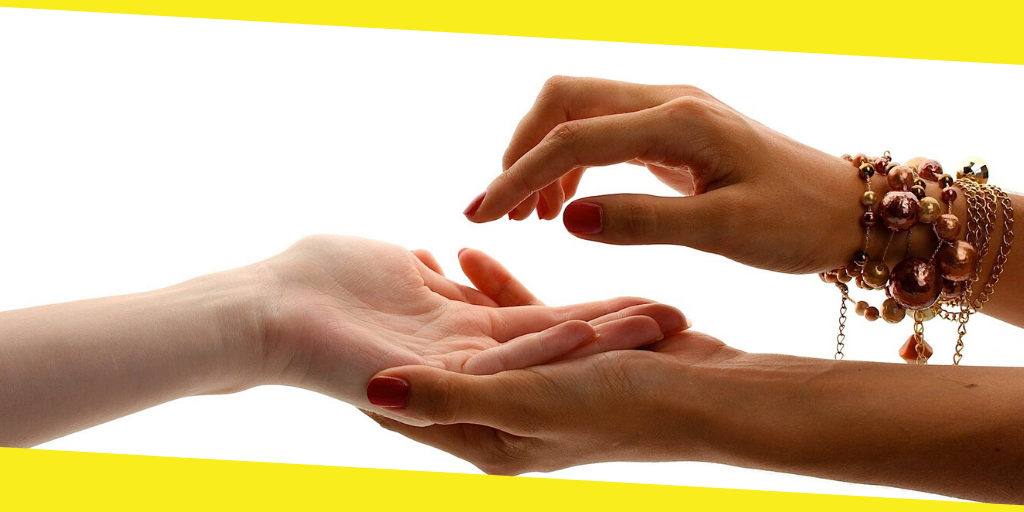Chinese Palm Reading Guide
This post was last updated on January 7th, 2025

Introduction
If you’re an astrology freak or want to learn more about divine practices, you may want to give palm reading a shot.
In general, palm reading, palmistry, or palm prediction is a process of learning someone’s personality, fortune, and overall future by analyzing his/her hands.
While many believe palm reading to be strictly tied to analyzing a person’s palm, other characteristics of one’s hand such as hand shape and size, fingernail structure and health, and finger length can reveal more information and play a large role in palm reading.
The other name for this practice is Chiromancy. Over the last couple of years, palmistry has risen immensely in popularity both as a casual hobby and a professional working field.
In the following article, we have assembled a comprehensive guide to palm reading for beginners, where we’ll teach you everything you need to know before taking up this new hobby.
Origin of palmistry
Historically, palmistry originates from several major cultures, the most notable ones being Indian astrology, Chinese astrology, and Roma fortune-telling, with some of them incorporating palm reading in the modern age as well.
Indian palm reading
When we talk about Indian astrology, we find the first traces of this practice thousands of years before the birth of Christ, in the ancient Hindu books of Vedas.
There is an interesting part of Vedas that specifically instructs monks of that time not to read palms for money, meaning that palm reading as a profession is several thousand years old.
Furthermore, as time passed on, palmistry continued to grow in India in the times of Brahmanism.
Roma fortune-telling
One of the few traditional aspects that are overlooked when talking about Romani culture is their love for fortune-telling. In ancient times, even when such acts were largely condemned by society and religion, there were many female fortune-tellers.
They were named drabardi and over the years they predicted the future of many important historical figures. Interestingly enough, palm reading is still popular in Italy today, with many gypsy women doing palm reading as their full-time job.
Chinese palmistry
The last palm-reading practice we’ll talk about is the one we’ll focus on in the rest of the article, that being Chinese palm-reading. Historically, Chinese palmistry dates back to the Zhou Dynasty which ruled over 3000 years ago.
Moving forward, we find traces of palm-reading as an organized working field in the Western Han Dynasty (206BC-9AD). At that time, it was tightly related to physiognomy which is a practice of judging someone’s character by their physical appearance.
Which hand should I read?
One of the first questions you might ask yourself when starting palmistry is which hand should you read and the answer varies on the person you’re asking. In some regards, it’s believed that the right hand is for females while the left hand is for males.
For the most part. the right hand is used for 80% of decisions for most palmists as it describes the person’s fate, however, the left hand can also be used to gather information about a person’s afterlife.
Hand Lines
There are five lines a palmist should consider when making their read, each one representing a unique aspect in a person’s life.
The LifeLine
The lifeline extends from the thumb to the wrist, in a curved fashion. A long lifeline is a sign of a resilient person, who even in the worst of situations keeps their cool and doesn’t lose their mind over small mishaps.
A short line is a characteristic of people who, whenever they feel cornered, would turn to other activities to keep their head cool and ease off the pressure regarding the hard situation they are in.
A faint line is a sign of a frustrated person, who could and should turn to different methods to calm their nerves in some situations, such as yoga, meditation, or any sort of physical activity to keep you from releasing your anger.
The Head (Wisdom) Line
The wisdom line stretches horizontally from the middle of the thumb to the other side of the palm, seemingly cutting the person’s palm in two sections. A short line would be a characteristic of a fast thinker, a long straight line, for someone who is over-analyzing most situations in their life.
If the line splits in two, you are very open-minded and can comfort others, as you are very sensitive towards other people’s feelings. A long curved line, however, would be a sign of an innovative and creative person, your imagination knows no bounds.
The Heart (Love) Line
The love line is the slightly smaller line above the head line. A long, straight heart line portrays a rational person, who could consider other people’s feelings in any stressful situation, whereas a short, straight line is a person fighting without falter for their freedom, they are known to show their emotions through their actions, rather than words.
A long curved line characterizes people who are unwavering when it comes to accomplishing their goals, while a short, curved line is a common sight for people who are comfortable in smaller circles of people, and are not that outgoing in large groups. A line with two or more X’s is a sign of being betrayed by those u care about deeply.
A split line is a characteristic of those who are often known to put their own emotions behind them to comfort others.
Recommended For You
Different Mudras to Consider When Buying a Wooden Buddha Statue
Most Inside
Most Inside offers high-quality recommendations and valuable updates to enhance all aspects of your life, providing premium guidance and enriching experiences.




